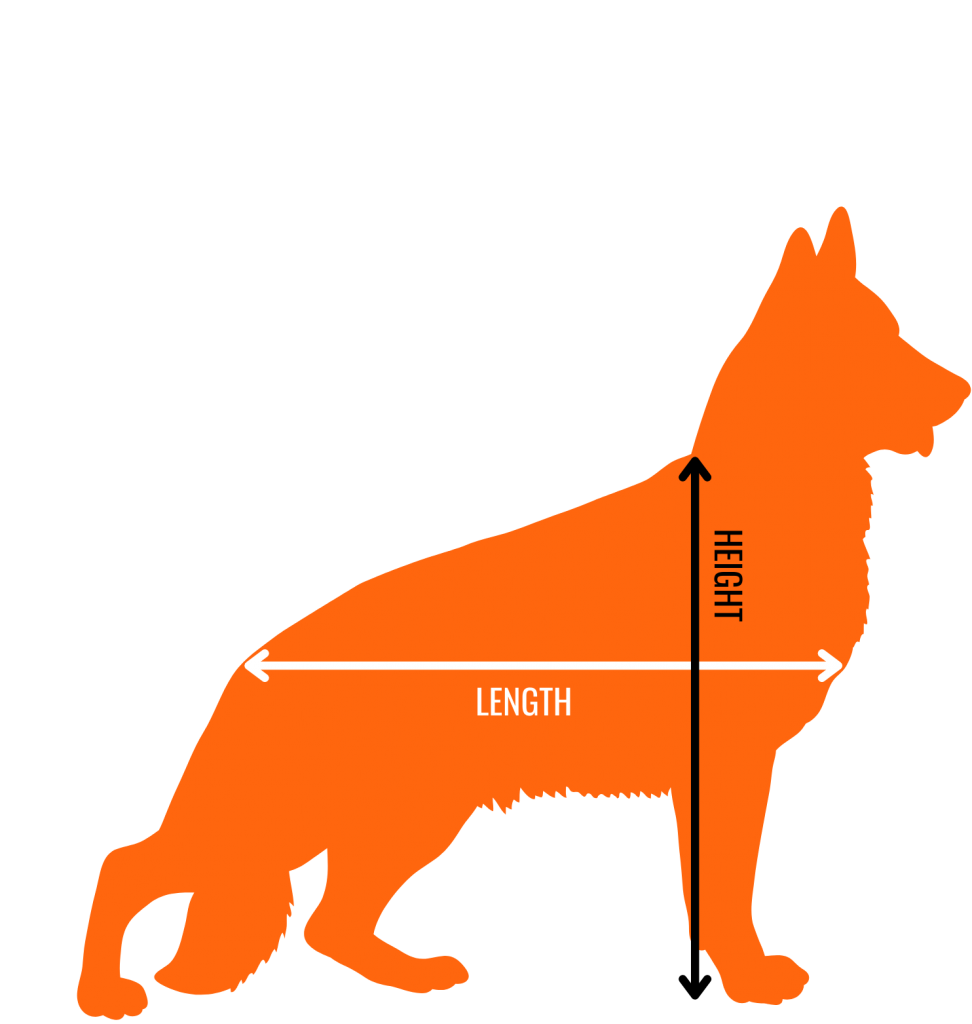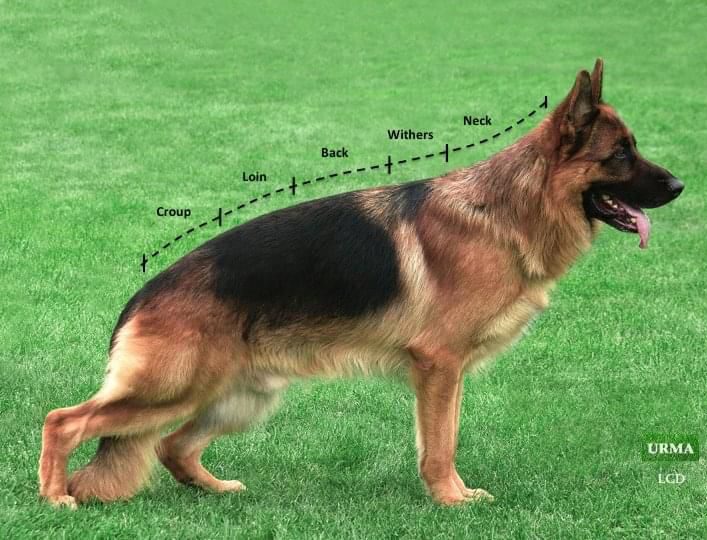

German Shepherd Anatomy
The German Shepherd is essentially a trotting dog developed for herding, and would work all day without tiring. Therefore, strict adherence to the structural makeup of the breed is of utmost importance. Features such as croup formation and shoulder angulation are just some of the traits that serious, dedicated breeders work for in their breeding stock.
The standard for the German Shepherd Dog calls for sound structural efficiencies for long, arduous work, as well as mental stability and a willingness to work. The dog should be approachable, quietly standing its ground, showing confidence, and a willingness to meet overtures without necessarily making them. It should be generally calm but eager and alert when the situation warrants. The German Shepherd Dog should be fearless, yet good with children and not timid or react nervously to unusual sounds or sights. Dogs that are overly aggressive due to overall fears of people and events should be eliminated from the gene pool as they are not structurally sound.
The withers are one of the most notable parts of canine anatomy as they are used to measure the height of a dog. The withers are a ridge on the dog’s back between its shoulder blades, and the height of a dog is measured from the bottom of its paw up to the withers, without including the neck, head, or ears in the measurement. The paw on a dog’s forelegs is connected to the pastern by the wrist joint, which is the shortest and lowest bone on a dog’s forelegs, excluding the paws and toes. The pastern joint connects the pastern to the forearm, which is connected to the upper arm by the elbow. These are only vaguely similar to the forearms, elbows, and upper arms found in humans, and the upper arm is connected to the body by the shoulder.
German Shepherd Skeletal
A dog’s hind legs differ significantly from its forelegs. Starting from the paws, the hind paws connect to the rear pastern. The rear pastern is connected to the secondary thigh, also known as the gaskin, by a pronounced joint known as the hock. The secondary thigh connects to the upper thigh by the stifle, sometimes referred to as the knee joint. The upper thigh forms the hindquarters and connects to the body by the hip
Along the back of the dog, there are the croup, loin, back, withers, and crest. The croup is the rearmost portion of the dog’s back, where the tail connects. The crest lies along the dog’s neckline. The loin, back, and withers fall in between the two, in the order described. Along the underside, there is the abdomen, brisket, and forechest. The abdomen is the rearmost portion of the dog’s underside, starting where the rib cage stops. The brisket forms the underside of the dog’s chest, where the rib cage is, and the forechest is the protrusion of the chest past the forelegs.
The dog’s head includes features common among most mammals such as eyes, nose, ears, and tongue. The elongated portion of the dog’s mouth and nose area is known as the muzzle. The point where the muzzle meets the remainder of the head is known as the stop and is usually where the eyes are located.

German Shepherd Proportions to the Standard
The black line represents the height at the shoulders, which should be measured using a special rod for measuring dogs, placing the animal on a solid floor. The white line represents the total length of the trunk which the German Shepherd varies between 111% and 125% of its height at the shoulders.
German Shepherd Cranio Facial Ratio
The cranio-facial axes (cranial axis AB and facial axis CD) are parallel in the German Shepherd dog. Any deviation from the parallelism represents a defect of varying degree. The right cranio-facial ratio is 1:1 (The mouth should be closed for accuracy).